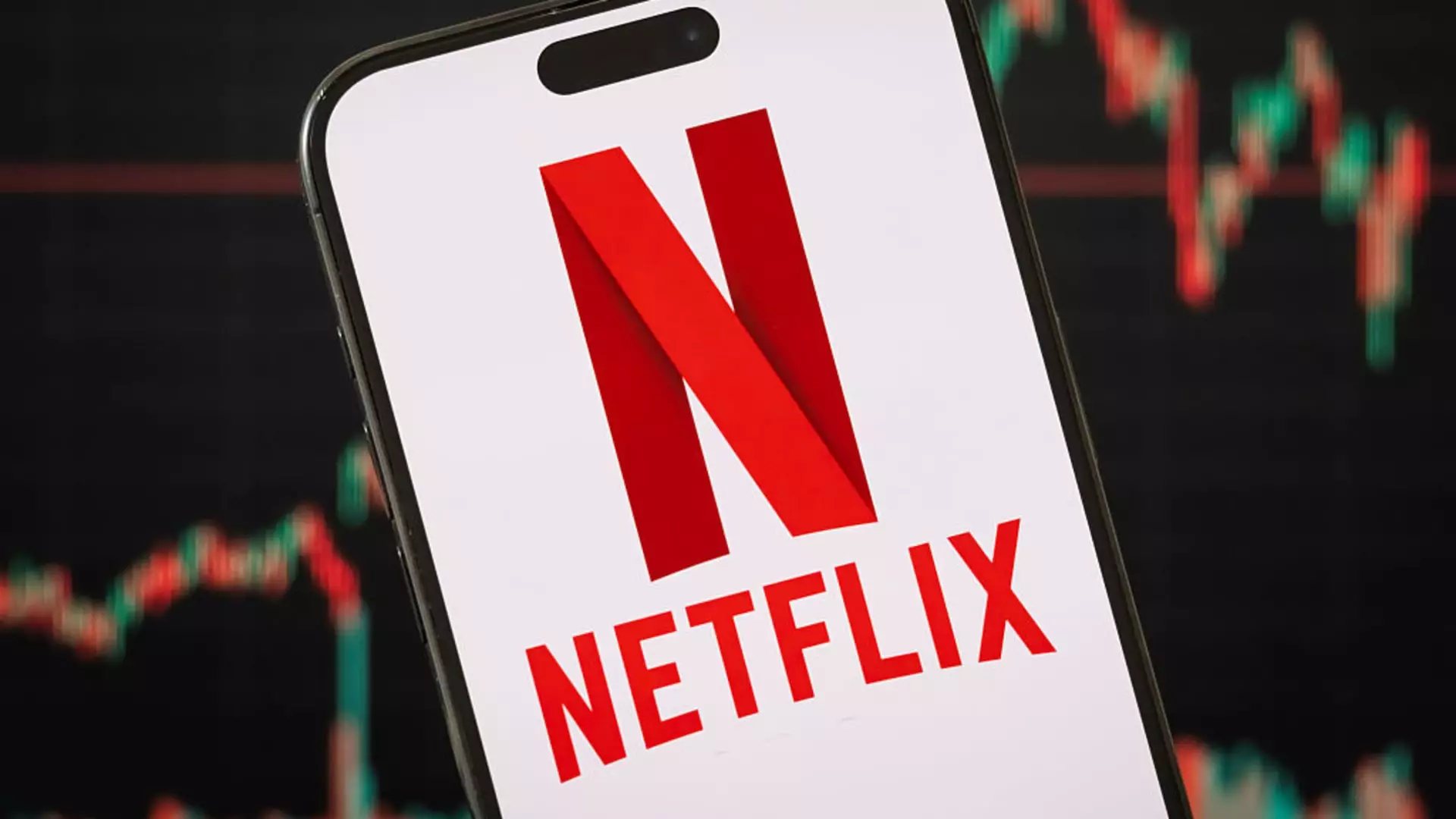Netflix is currently riding a wave of triumph that deserves deeper contemplation. Marking its greatest triumph yet, the streaming behemoth has enjoyed an unbroken climb in stock value for 11 consecutive trading days. This is a milestone that transcends mere monetary gain; it signifies a potential cultural shift in our entertainment consumption habits and how we perceive value in times of economic uncertainty. Previously, Netflix’s stock had accomplished a commendable nine-day rally, but this latest achievement speaks volumes about its resilience in an ever-changing marketplace.
What makes this streak particularly noteworthy is its juxtaposition against the backdrop of broader economic challenges, including trade tensions and an unstable media landscape. Despite these hurdles, Netflix has not merely survived; it has thrived, revealing an interesting interplay between consumer loyalty and emerging market pressures.
Context of the Climb
The crux of Netflix’s recent success can be traced back to its latest earnings report released on April 17, where the firm disclosed an impressive 13% revenue growth within the first quarter of 2025. The rise was propelled by subscription fees and advertising revenues surpassing expectations, presenting a strong counterpoint to the volatility plaguing traditional media outlets. For instance, Warner Bros. Discovery and Disney have suffered staggering losses since the onset of Trump’s presidency, with declines of nearly 10% and 13% respectively. Meanwhile, Netflix has positioned itself as an essential service that consumers seem unlikely to relinquish, even during potential economic downturns.
Such resilience inevitably raises questions about the adaptive capacities of modern entertainment platforms in an era dominated by consumer choice and economic fluctuations. Is Netflix merely capitalizing on this financial boon, or is it indicative of a more profound shift in how we engage with entertainment?
The Economic Outlook and Consumer Behavior
One notable aspect of the streaming giant’s narrative is its apparent immunity to the adverse effects of tariffs and trade policies. As Trump’s administration casts uncertainty across various sectors, Netflix appears unfazed, with co-CEO Greg Peters assuring investors that the company remains robust, stating that “there’s nothing really significant to note” in terms of adverse impacts. This performance contrasts sharply with the traditional media sector, which has been battered by these very same policies.
Importantly, Peters also underscored the historical tenacity of entertainment during economic hardships. In times when consumer spending generally tightens, platforms offering low-cost entertainment options tend to emerge as safe havens, illuminating a fascinating aspect of human psychology. The necessity of affordable entertainment might lead consumers to prioritize streaming services, illustrating Netflix’s strategic position in catering to a critical market need.
Analysts Weigh In
Expert opinions further bolster Netflix’s case for a bright future. A recent prediction from JPMorgan suggests significant upside for Netflix shares, driven by its established leadership in global streaming. They note that the imminent Advertising Upfronts in May could act as a catalytic force paving the way for soaring stock value. This faith in Netflix isn’t merely speculative but is rooted in observable consumer trends and behavioral analysis.
As Netflix continues to refine its pricing strategy—with plans ranging from $7.99 for ad-supported viewing to an elevated $24.99 for premium services—it’s crucial to probe whether these price hikes have affected subscription growth. The company has ceased publicly sharing detailed subscriber metrics, transitioning its focus instead to revenue growth. This veil of secrecy may evoke skepticism, as investors and analysts are left pondering: Is the subscriber base genuinely expanding, or has it plateaued?
The Power of Value Proposition
What remains clear is Netflix’s adeptness in preserving its value proposition amidst changing pricing structures. The subscription adjustments haven’t alienated its audience; instead, they signify a calculated risk that seeks to enhance revenue without compromising customer loyalty. In an age where consumer habits are volatile, retaining value while increasing prices is a formidable feat that few can accomplish.
As Netflix continues on its upward trajectory, it encapsulates the dynamic landscape of modern entertainment. Its ability to remain relevant and profitable may serve as a harbinger for other media companies navigating turbulent waters. The question isn’t whether Netflix is winning, but rather how it will leverage this momentum to redefine media consumption in the years ahead.

